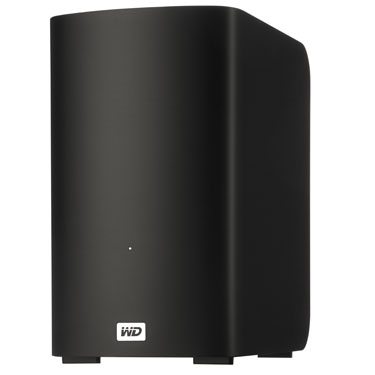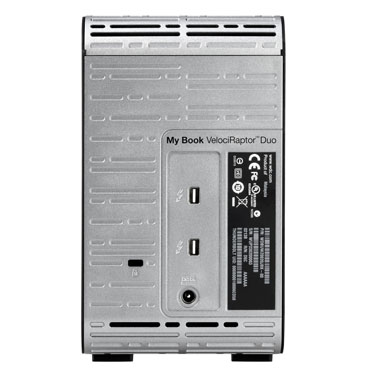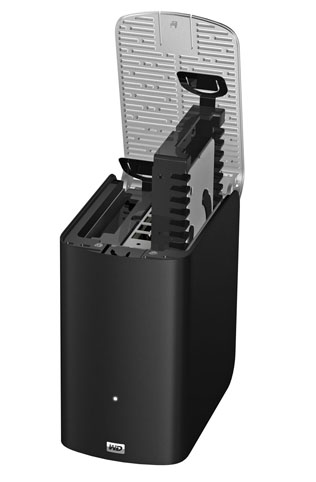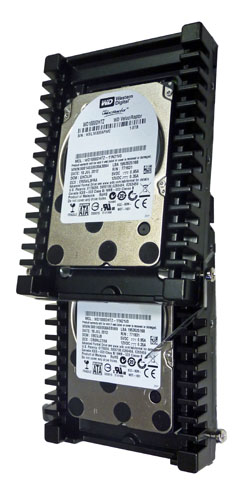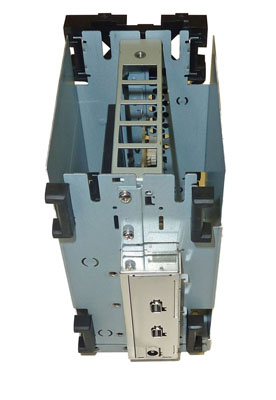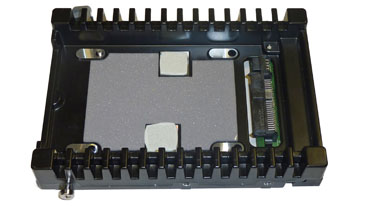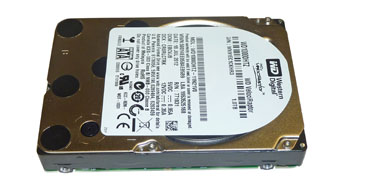Thunderbolt-equipped beast
Western Digital has broadened its external hard-drive storage solutions with the introduction of the My Book VelociRaptor Duo. Fetching a cool £620 ($899) at retail and shipping with a 2TB capacity, you may be surprised to learn that it features two mechanical disks in a RAID0 configuration. But these aren't ordinary hard drives, and neither is the interface.
Letting the cat out of the bag, VelociRaptor Duo uses two 1TB WD VelociRaptor (WD1000DHTZ) 2.5in drives that spin at up to 10,000RPM. Built for the workstation/creative market and capable of sequential read and write speeds of 200MB/s, these SATA 6Gbps drives retail for £170 apiece. Combine them in RAID0 and speeds of 400MB/s are possible, though the configuration choice is open to the user. WD makes the most of this bandwidth potential by using nascent Thunderbolt connectivity, providing up to 1.2GB/s of bidirectional bandwidth per channel.
Ensconced within a well-built enclosure that, save for colour, is identical to the regular Thunderbolt Duo - which uses slower drives - the 16cm-high, 2kg box features a couple of Thunderbolt ports on the rear. Either one can be used to connect the dual-drive VR Duo up to the system, while the other can be connected to another Thunderbolt-totin' device. The interface enables 10W of DC power to be drawn through each port, but keeping matters simple, especially with fast-spinning drives, WD supplies an external power adapter. Perhaps missing a trick and expanding upon the VR Duo's compatibility, a USB 3.0 connection would have been nice to see.
WD designs the drives to be user-accessible. A soft-touch top flips open to reveal a perforated metal holding plate that's thumbscrewed into the chassis. Underneath, two heatsink-clad drives sit alongside one another, smoothly docking into a SATA interface within the enclosure. The entire structure is solid and well-designed. Drives are labelled 'A' and 'B' to avoid confusion and aid trouble-shooting in case anything goes awry. WD also includes a metre-long Thunderbolt cable in the package, and this is no mere afterthought; they usually cost around £30.
Ostensibly designed for the Mac operating system - the drives are formatted in HFS+ - and pre-configured in speedy RAID0 (striped), WD provides a Mac-only utility that enables the user to change the default format to RAID1 (mirrored) or to function as two separate disks under JBOD. Attach the VelociRaptor Duo to a Windows machine and, understanding the Mac formatting, one needs to reformat the drives using the OS' built-in Disk Management utility.
Setup, then, is pretty straightforward, and the VR Duo is up and running in a matter of minutes. Placed on a desk the fast-spinning drives emit an audible hum at most times, and touching the sides reveals a subtle vibration from the chassis. Hit the drives hard with some large-file transfers and the background hum rises to a low-frequency tapping as the heads scurry around the platters. It's not loud, but coming from using SSDs day in, day out, the noise is certainly perceivable.
And stripping the enclosure bare shows why the unit always makes a little noise. At the bottom is a 40mm fan that activates as soon as the VR Duo enclosure is switched on. Actually, the fan's noise is mostly masked by the drives', as manually stopping the fan - using a high-tech method of placing a finger on it - does little to reduce the overall noise profile.
To Western Digital's credit, each 10,000RPM hard drive sits on a thin silicon bed that helps absorb vibrations. The holding cage is also required because the drives use an extra power connector that's not present on a standard SATA interface. This extra four-pin notch means that users' 2.5in SSDs cannot be plugged into the holding cage, though a drive can be wiggled directly into the enclosure.
In sum, you receive two drives valued at £170 apiece, a custom, well-put-together dual-port Thunderbolt enclosure, and a metre-long Thunderbolt cable... all for £620. Looking at the basic costing facts, we believe the price needs to come down to comfortably below £500 for it make a lot of sense. Backed up by a three-year warranty, well-heeled creative types will need to see performance before considering busting out the credit card, so let's hop to it.






